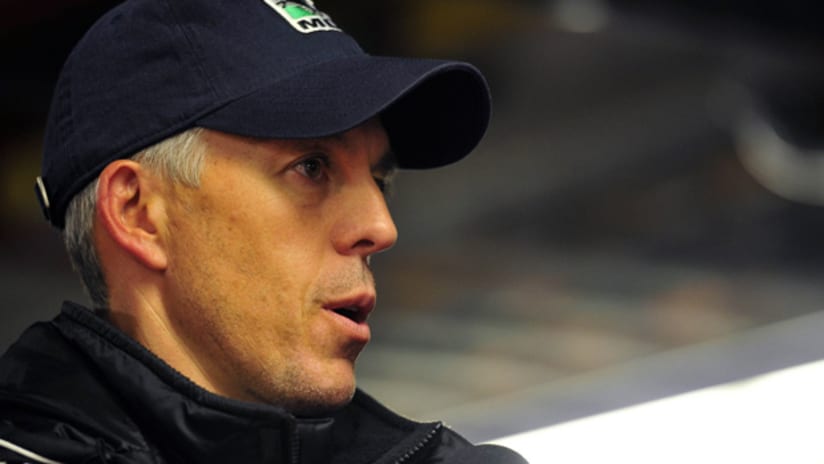Houston Dynamo head coach Dominic Kinnear recently called diving, or simulation, is "a sickening epidemic" in MLS. If he's right, then it's a full-blown plague in other countries, according to MLS' head of competition.
"In general, the league does not wish to see simulation or embellishment," MLS executive vice president of competition, technical and game operations Nelson Rodriguez told MLSsoccer.com this week. "Is it worse in MLS than in other leagues? No, I don't believe so. In fact, I think it's generally better than in other leagues. But it is always a challenge to try to modify such behavior because unfortunately, it has become engrained in soccer worldwide as a form of acceptable gamesmanship.
"I think a vast majority of North American soccer fans and sports fans in general view the attempt to influence a referee decision through these means as unsightly or even unacceptable."
WATCH: A primer on the Disciplinary Committee
Kinnear was miffed when FC Dallas forward Kenny Cooper flopped to earn a free kick that eventually led to the opening goal in FCD's 3-2 win over the Dynamo on Sunday. After the match, Kinnear railed against what he termed "cheaters" and their diving, which he says "makes me want to throw up."
But MLS is farther ahead of the game when it comes to doing something about it compared to other top-flight leagues around the world. Beginning in 2011, the league modified the Disciplinary Committee's parameters, allowing it to use video review to punish instances of simulation and embellishment anywhere they occur on the field as long as a referee has not already sanctioned the behavior.
And if there is unanimity across all five members of the committee, it can issue fines and suspensions to players. In 2012, MLS fined five players -- Alvaro Fernandez, Danny Cruz, Leo Gonzalez, Jair Benitez and Fernando Cardenas -- for acts of embellishment.
In 2011, Ex-D.C. United forward Charlie Davies was fined for simulation in a match against Real Salt Lake, while RSL's Alvaro Saborio was fined and suspended later that same year for a similar incident.
The committee, according to Rodriguez, operates under strict, clearly defined guidelines. Their review of simulation incidents "relies mostly on whether or not contact is made" with no "latitude to interpret the amount of contact."
"Generally speaking, if there is contact made, then simulation will not be considered," Rodriguez said.
When it comes to embellishment, the Disciplinary Committee looks at "contact made relative to the contact point on the body where the embellishment occurs." So, for example, a player taking a hit to the chest, but grabbing his face would constitute "embellishment." The amount of perceived force involved in the contact can be considered as well.
Whether it's simulation or embellishment, the Disciplinary Committee is empowered to issue a suspension "when the instance has a material impact on the game" -- i.e. a goal being scored or disallowed, a caution or red card being issued as a result of the action -- or a fine when it doesn't.
READ: Disciplinary Committee to crack down on three new issues in 2013
WATCH: Explaining Mass Confrontation
As can be expected, video plays a massive role in these judgements by the five-member panel. If the lack of contact cannot be determined for simulation cases and the point of contact is not clear for embellishment, there is nothing the Disciplinary Committee can do.
Nonetheless, to the extent it can, MLS' ability to punish divers has caught the eye of other leagues around the world.
"We have been approached by a few different leagues in [CONCACAF] asking us for our policy and our procedure by which this is being judged," Rodriguez said. "They are considering instituting similar policies or procedures in their league."













